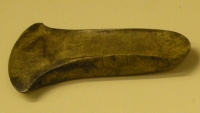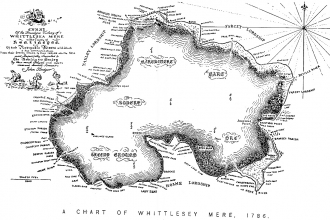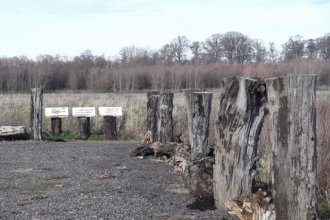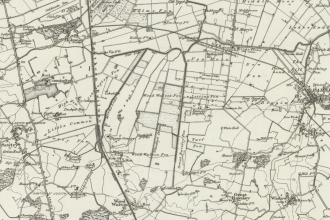End of the Ice Age - formation of the fens
Some 10,000 years ago, at the end of the last ice age, Britain was joined to continental Europe and the rivers we now know as the Nene and the Ouse were just tributaries of the Rhine. This was the Mesolithic period when our Stone Age ancestors inhabited the forests that had grown up as the ice retreated. They shared the forested landscape with wolves and lynx, preying on elk and aurochs, the ancestors of domestic cattle.
At that stage, the area we now know as the fens consisted of deposits of Jurassic clay that had been laid down about 150 million years before. As the ice retreated, sea levels changed and over thousands of years the fenland area went through a succession of floods and drier periods. At times, the fen rivers could not empty into the North sea because of ice further north so fresh water lakes were formed and large amounts of silt were deposited.
Peat, partially decayed vegetation, began to form over the clay in the vast low-lying areas. As it accumulates peat can hold a lot of water, slowly creating boggy conditions and allowing the area of wetland to expand over many centuries.
As the forest landscape changed to a wetland one, the waterlogged conditions prevented plants from decomposing. In particular when great trees from the ancient forests died they fell over in storms, became buried and preserved by water and peat, and formed the semi-fossilised “bog oaks” that are found when digging in the peat today. Radiocarbon dating has aged some of these at 4300-4600 years. Until quite recently, when central heating became common, villagers cut up and burned the bog oak timber using it as fuel for cooking and heating.
The land was subsiding, rivers could not reach the sea and their channels became blocked by water plants. The result was a vast landscape of water and sedge. Beavers, otters and other wildlife thrived in the reedbeds, open water and wet woodland. Plants and insects flourished on the peat soils, and the land provided a great abundance of fish and birds, providing plentiful food. Many species developed that were found nowhere else in the country.
Neolithic and Bronze Age
Stone axeheads found at Woodwalton
The fens were heavily settled in the Neolithic and Bronze Ages and there is every impression of a way of life as sophisticated as elsewhere in Britain. For example, nearby Flag Fen, south-east of Peterborough, dates from about 1,300 BCE and is internationally acknowledged as one of the most important Bronze Age sites in the world. These people used timber trackways in some places to move around the flooded landscape. Part of a wooden trackway was found in the 19th century, running across the central part of Woodwalton Fen, the track was made of cut pine packed very close together and pegged down with stakes six or seven foot long, pointed at the bottom. Worked flints and bronze axeheads have also been found here.

Early Bronze Age flanged axe head, found when the Mere was drained. From Peterborough Museum.


